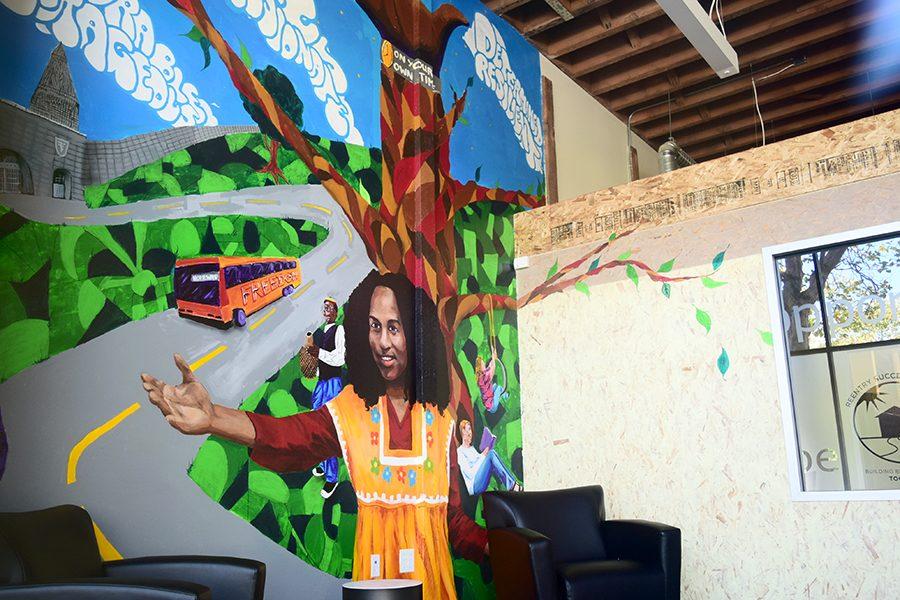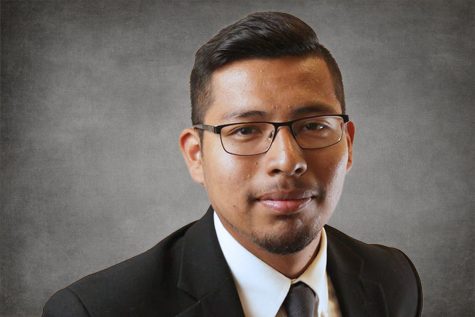Mural represents communal growth, individual success
Mural showcases the welcoming atmosphere of the Re-Entry Success Center in Richmond
The “Freedom Expression” mural was unveiled in the lobby of the Re-Entry Success Center in Richmond on Aug. 14. The mural emphasizes the welcoming spirit of the center.
Aug 20, 2016
RICHMOND — The Re-Entry Success Center unveiled its “Freedom’s Expression” mural located in its lobby on Aug. 15 to inspire the formerly incarcerated and bring the community together.
Located on 912 Macdonald Avenue, the center provides resources and opportunities for the formerly incarcerated and their families.
Rebecca Brown, founder and president of Further the Work, a nonprofit organization located in Richmond, designed and wrote the proposal to the city of Richmond for the “Freedom’s Expression” mural.
“Once people see it (the mural) they will see themselves being able to start over and grab hold of redemption,” she said.
The mural is intended to send out a message of welcoming and acceptance, Brown, the chairperson of the Re-Entry Success Center Steering Committee, said.
Event host and reentry coach Dameion King said the mural is the cornerstone of the center.
As a formerly incarcerated member of the Richmond community, he said Contra Costa College’s health and human services department holds a significant role in his post-incarceration development.
King said he gives credit to health science department professor Aminta Mickles for solidifying his “perspective of humanity.”
He said he appreciates the work people like CCC EOPS Outreach Coordinator Ken Reynolds do to help reduce recidivism.
King said the mural succeeds in conveying the center’s welcoming message. It is an opportunity for people leaving prison and re-entering society to re-gain a sense of ownership of their community through the message of the mural and the center.
He said one of the problems formerly incarcerated people face is not being able to feel a sense of community due to a lack of ownership.
Brown said the committee wanted the mural to answer the questions “Who are we?” and “What do we want to declare?”
Lead artist Desi Mundo said the ongoing project extends that sense of ownership by asking the attendees for feedback by having them write their goals, accomplishments or words that give them resolution on a piece of paper in the shape of a leaf, and at a later date have it posted on a tree on the mural.
The concept is that as the center grows, so will the members, the tree in the mural and its leaves, King said.
Seven community artists, two committee members of the Re-Entry Success Center and two professional artists — 11 people in all — were chosen to work on the mural. The project went from May to August.
Brown said the group met for two-to-three hours every Monday night for 12 weeks to create the mural.
Community artist and member of the Re-Entry Success Center John Johnson said the mural represents community unification.
Johnson said the mural project brought strangers together to form one unit that did something worthwhile for the community.
He said the project is unlike any other he has encountered and feels like the essence of family.
Community artist and lawyer Robin Lipetzky serves as chief public defender for Contra Costa County.
She said she holds a position where she is the last defense of a community member from going into a system where his or her path to rehabilitation is not definite.
She said it was special to be able to use art to help the formerly incarcerated come out of the program with a positive mindset.
Brown said since its opening in November 2015, the Re-Entry Success Center has been able to help 240 members free of charge in eight key areas — family, housing, legal, employment, health and wellness, education, finances and public benefit.
Also, on-site third party partners help and support members. Some include the Center for Human Development, which is available for families; Shelter Inc., available for housing; and Leap for Education, Inc., an educational resource King said.
He said the presence of programs like The Re-Entry Success Center have been increasing since a decade ago. Programs at places like college campuses and in communities result in a growing focus to help the formerly incarcerated re-enter society through education and discipline that comes with it.



